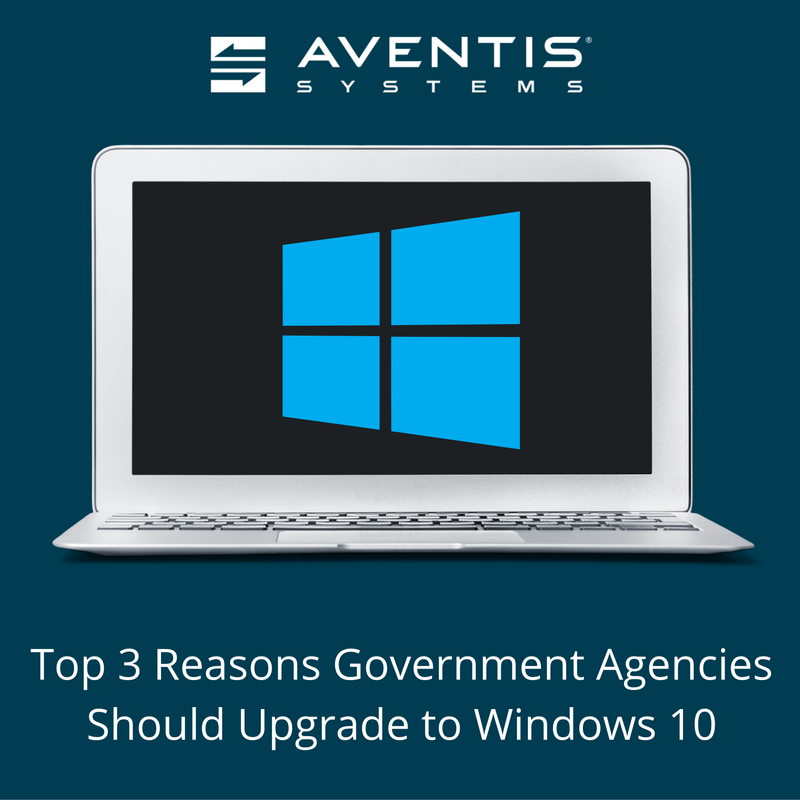Top 3 Reasons Government Agencies Should Upgrade to Windows 10

Hesitancy surrounding Windows 10 upgrades continues across a variety of industries. In the government sector, proven operability is a factor that may be causing some agencies to wait to upgrade operating systems, such as for critical weapons and radar systems, but it is important that security and other benefits are weighed against the need for proven operability. In this article, we cover the top three reasons why government agencies should upgrade to Windows 10.
1. Superior PC Security
Windows 10 is equipped with comprehensive, built-in security features with automatic updates to provide better end user system protection. Windows Defender is the free anti-virus software which defends end user systems from threats via email, internet, or cloud sources by detecting and removing malware, viruses, and spyware in real-time. Windows Firewall is the free network protection to prevent hackers and malware from gaining access to PCs. SmartScreen is the free online defense solution available on Internet Explorer and Microsoft Edge that protects end users from online malware or phishing threats. The improved security features that come standard with Windows 10 are updated automatically throughout the lifetime of the platform, providing constant PC protection.
2. The Latest Tools
One of the most obvious benefits of using Windows 10 is that it is the latest version of the Windows operating system available. The major advantage that coincides with using the latest version of any platform is users’ access to the newest software features available. In the case of Windows 10, in addition to the improved, always-up-to-date security features, end users also have a variety of innovative productivity tools and personalization features. The most notable new tool of Windows 10 is Cortana, which Microsoft calls your personal assistant, and delivers reminders, helps with tasks such as sending emails and searching applications and files, status updates on flights or packages, and personalized information.
3. Length of Supported Lifetime
Aside from improved security and new tools, another important factor when deciding to upgrade operating systems is the software end of life date. Microsoft coined the phrase “end of support” to designate when their platforms reach end of life. Windows 7, which remains the most popular Windows version and is likely the operating system utilized at agencies who are waiting to upgrade their end users, reaches the end of all support in January 2020. Even though 2020 is a few years away, it will be here before we know it. With Windows 10, you have more than five additional years before Microsoft ends support in October 2025. That means you have five more years of automatic security updates and any needed technical support.
While some government agencies may be postponing upgrades to Windows 10 due to a lack of proven operability, it is crucial for procurement and IT professionals to weigh the operability requirement alongside the improved security features and productivity tools. Enhanced security and productivity can at times outweigh possible operability risks. Take a look at Aventis Systems’ Windows 10 offerings on
GSA Advantage! today.